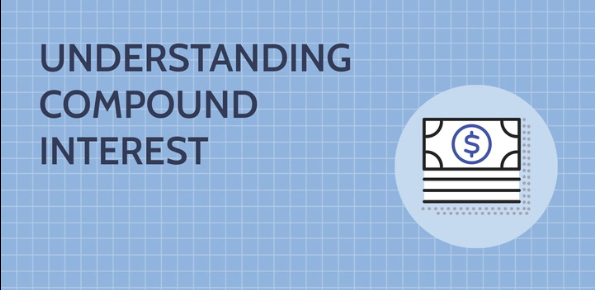The Power of Compound Interest (With Examples)
Albert Einstein allegedly called compound interest the eighth wonder of the world and for good reason. Whether you’re saving for retirement, investing in stocks, or building a long-term financial plan, compound interest is one of the most powerful tools you can use to grow your wealth.
In this blog post, we’ll break down what compound interest is, how it works, and show you real-life examples of just how impactful it can be.
What Is Compound Interest?
Compound interest is the process where your investment earns interest on both the original amount (the principal) and the interest that has already been added. Over time, this creates a snowball effect that leads to exponential growth.
Simple vs. Compound Interest:
-
Simple interest: Interest is earned only on the original amount.
-
Compound interest: Interest is earned on the original amount plus all previous interest earned.
How Compound Interest Works
The formula for compound interest is:
A = P(1 + r/n)^(nt)
Where:
-
A = final amount
-
P = principal (initial investment)
-
r = annual interest rate (decimal)
-
n = number of times interest is compounded per year
-
t = number of years
Don’t worry—you don’t need to memorize the math. Let’s look at examples instead.
Example 1: Starting Early vs. Starting Late
Let’s say two friends, Anna and Ben, both invest $200 per month at an 8% annual return.
-
Anna starts at age 25 and stops at 35 (only 10 years of investing).
-
Ben starts at age 35 and continues until age 60 (25 years of investing).
At age 60:
-
Anna has around $350,000, even though she invested only $24,000!
-
Ben has about $300,000, despite investing $60,000.
✅ Lesson: Time is more powerful than money when it comes to compound interest.
Example 2: One-Time Investment
You invest $5,000 once at age 25 in a fund that earns 10% annually, compounded yearly.
| Year | Value |
|---|---|
| 1 | $5,500 |
| 5 | $8,053 |
| 10 | $12,969 |
| 20 | $33,637 |
| 30 | $87,247 |
| 40 | $226,296 |
✅ With zero additional contributions, your money grows 45x in 40 years!
Example 3: Monthly Contributions Over Time
You invest $100/month at 8% interest, starting at:
| Age | Amount at 60 |
|---|---|
| 20 | $349,100 |
| 30 | $170,400 |
| 40 | $74,500 |
✅ Every decade you wait costs you tens or even hundreds of thousands in potential earnings.
The Three Keys to Making Compound Interest Work
1. Start Early: The Power of Compound Interest (With Examples)
Time is your biggest ally. Even small investments grow significantly when given decades to compound.
2. Stay Consistent
Set up automatic contributions to your investment or retirement account. Consistency beats intensity.
3. Be Patient
Compound interest rewards the patient investor. The biggest growth usually happens in the later years.
Where Can You Earn Compound Interest?
-
Savings accounts (though rates are low)
-
High-yield savings or money market accounts
-
Retirement accounts (401(k), Roth IRA, etc.)
-
Stock market (especially long-term, reinvested dividends)
-
Investment apps and ETFs
Final Thoughts on The Power of Compound Interest (With Examples)
Compound interest may seem slow at first, but over time it becomes a financial superpower. Whether you’re saving a little or a lot, the sooner you start and the longer you stay invested, the more you’ll benefit.
So, if you’re wondering when to start investing or saving—the answer is simple:
👉 Start now. Let time do the heavy lifting.


